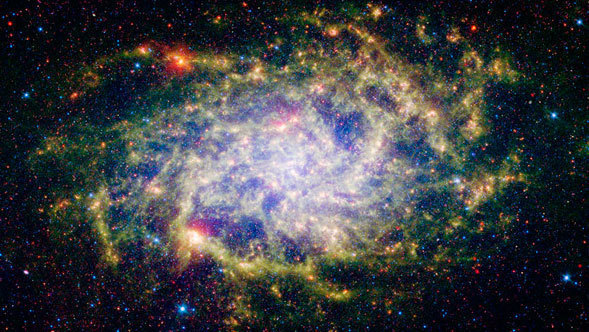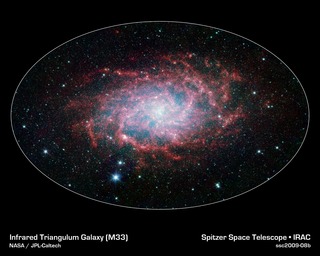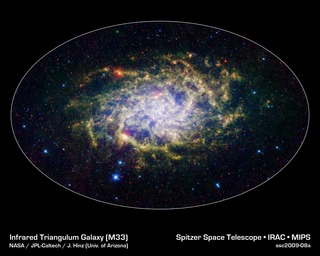
News Release • April 3rd, 2009 • ssc2009-08 •
This new image of the Triangulum galaxy is being released as part of the 'Around the World in 80 Telescopes' event for the International Year of Astronomy.
One of our closest galactic neighbors shows its awesome beauty in this new image from NASA's Spitzer Space Telescope. M33, also known as the Triangulum Galaxy, is a member of what's known as our Local Group of galaxies. Along with our own Milky Way, this group travels together in the universe, as they are gravitationally bound. In fact, M33 is one of the few galaxies that is moving toward the Milky Way despite the fact that space itself is expanding, causing most galaxies in the universe to grow farther and farther apart.
When viewed with Spitzer's infrared eyes, this elegant spiral galaxy sparkles with color and detail. Stars appear as glistening blue gems (several of which are actually foreground stars in our own galaxy), while dust rich in organic molecules glows green. The diffuse orange-red glowing areas indicate star-forming regions, while small red flecks outside the spiral disk of M33 are most likely distant background galaxies. But not only is this new image beautiful, it also shows M33 to be surprising large - bigger than its visible-light appearance would suggest. With its ability to detect cold, dark dust, Spitzer can see emission from cooler material well beyond the visible range of M33's disk. Exactly how this cold material moved outward from the galaxy is still a mystery, but winds from giant stars or supernovas may be responsible.






